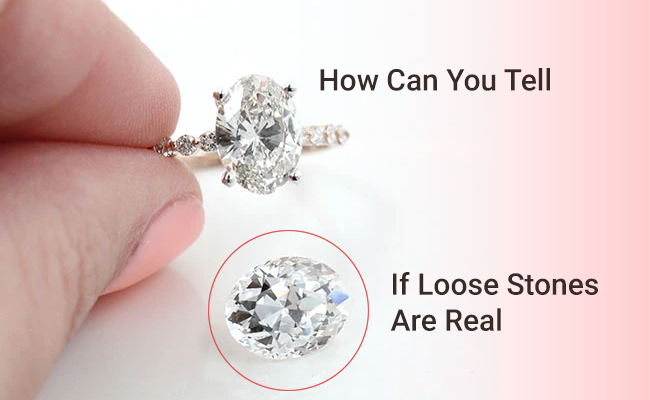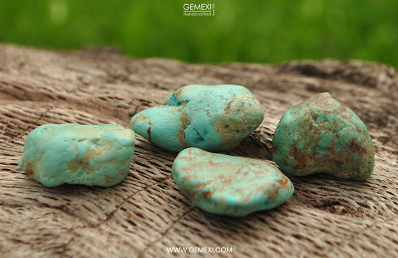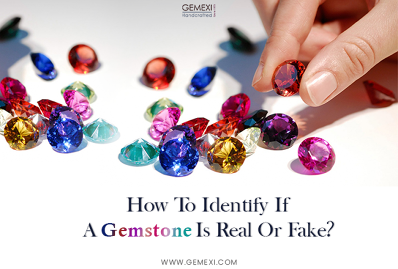How Can You Tell If Loose Stones Are Real
By Gemexi Team | Loose Gemstones- Updated On Mar 16, 2020

What Are Real Gemstones?
Natural gemstones are brought to us as a courtesy of nature and have entirely no hindrance from humans other than being mined, cut and polished. By the point they materialize in our jewelry, natural stones will look dissimilar than their original form, but that does not mean that they have been altered in other artificial and misleading ways. Natural is supposed to indicate that the stone has not been enhanced, treated or altered.
What are genuine stones and how to identify real gemstone?
A genuine gemstone is an authentic thing pretty much like a natural gemstone. However, the stone isn't considered to be natural anymore as it was treated in some or other ways to enhance its appearance. Improvements allow jewelry manufacturers to enhance the look of inferior quality gemstones that consumers wouldn't purchase otherwise. Treated gemstones are absolutely genuine, but they are not considered natural.
Buying pricey gemstones from an individual or a company you trust will be suggested, especially if the stones are labeled natural. Gemstones that aren't generally treated include peridot, garnets, hematite, moonstone, and alexandrite. Many other gemstones are normally treated to improve their appearance.
Are All Genuine and Natural Gemstones Valuable?
No, a 'natural' category does not assure that a gemstone is valuable. Large to small stones of poor quality are widespread and are often considered as mining castaways. Gemstones can vary in worth due to their great quantity. Acquire the specifics about a particular gem before you pay the best price just because it is marked as "natural."
How Are Loose Gemstones Priced?
Like several other industries, supply and demand will constrain gemstone prices to go up and down. For example, let us compare two red gemstones:
- Natural rubies of high quality are precious and rare, so the demand for this gem is always high. Some of the regions where first-class rubies are mined are in political chaos, and due to this supply is reduced even more.
- When we compare rubies to red garnets, which are undoubtedly gorgeous, but not rare. A flawless and perfect natural garnet costs a great deal but less than a ruby of similar quality.
The more luxurious and hard-to-find natural loose stones, such as diamond (white and fancy color), sapphire (blue and purplish colors), emerald, opal, and ruby are some of the favorite lab-created stones. They're not gem imitations as the lab-created gemstones are grown in a laboratory but are identical physically, chemically, and optically to natural gems. On the other hand, an imitation gemstone is also artificially made but does not follow the authentic nature’s recipe, thus it’s completely different in terms of physical, chemical and optical composition from the natural gem that it copies.
Other considerations
In addition to getting a rare, top-quality gemstone looks for a lesser price, many consumers are fascinated by lab-created stones for other reasons. Also when we speak environmentally, lab-created stones do not levy natural resources the way the natural gems do. No mines are dug, and the labs use a portion of the utilities and resources which are necessary for a mining operation and hence leave behind less pollutant.
How to identify pure gemstones?
The most significant feature that concludes the value and beauty of colored gemstones is color. Judging color is mostly done by comparing similar colored gemstones that are placed together.
Our memory of color is quite short, so when you see a few colored stones of the similar carat weight and shape, the same species & color, you will be able to select the best stone from the lot. The color evaluation consists of 3 elements: grading of stone’s hue, saturation, and tone.
- Hue reflects that you need to review the stone’s main and secondary colors. For instance, a stone can be greenish-blue or orangey-red.
- Saturation is all about judging the brightness of the color and on the other hand lack of color. Usually, it is considered that the brighter a color is the more valuable a gemstone will be.
- Tone narrates to the presence of blackness in a gemstone. The medium tone is usually thought to be superior for many colored gemstones out there.
So these are some tips and tricks that you need to find from several jewelry stores, fairs or gem dealers to educate your eye.
- Tags:
- Identify Pure Gemstones
- Natural Loose Stones For Sale
- Real Gemstones
- How To Identify Real Gemstone
- Loose Gemstones








.jpg)


0 Comments
Write Comments